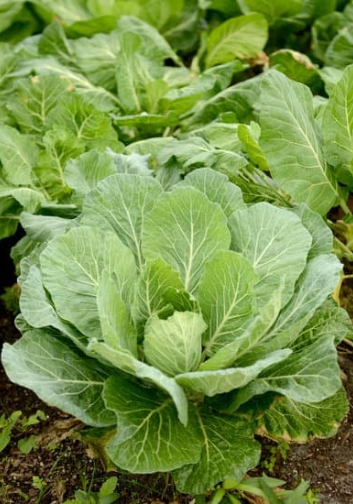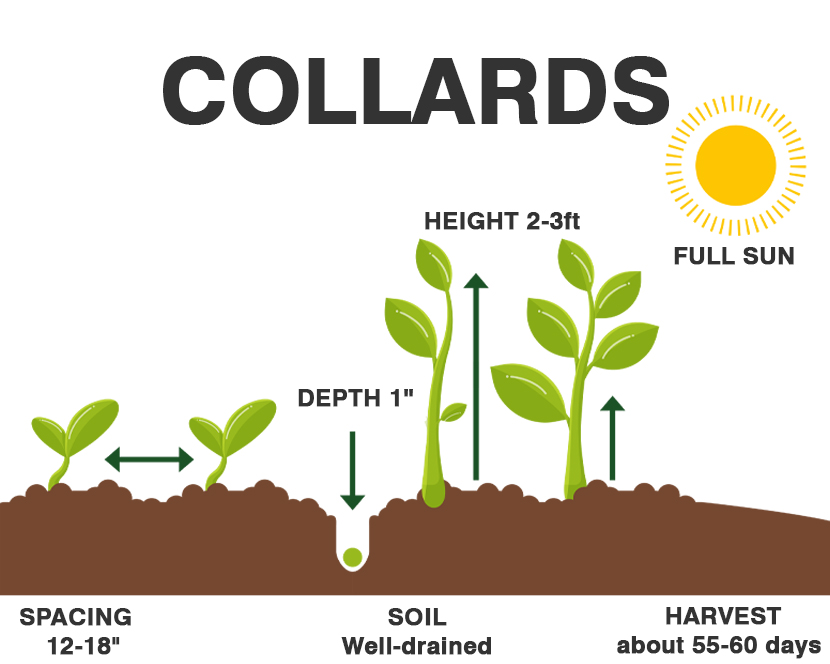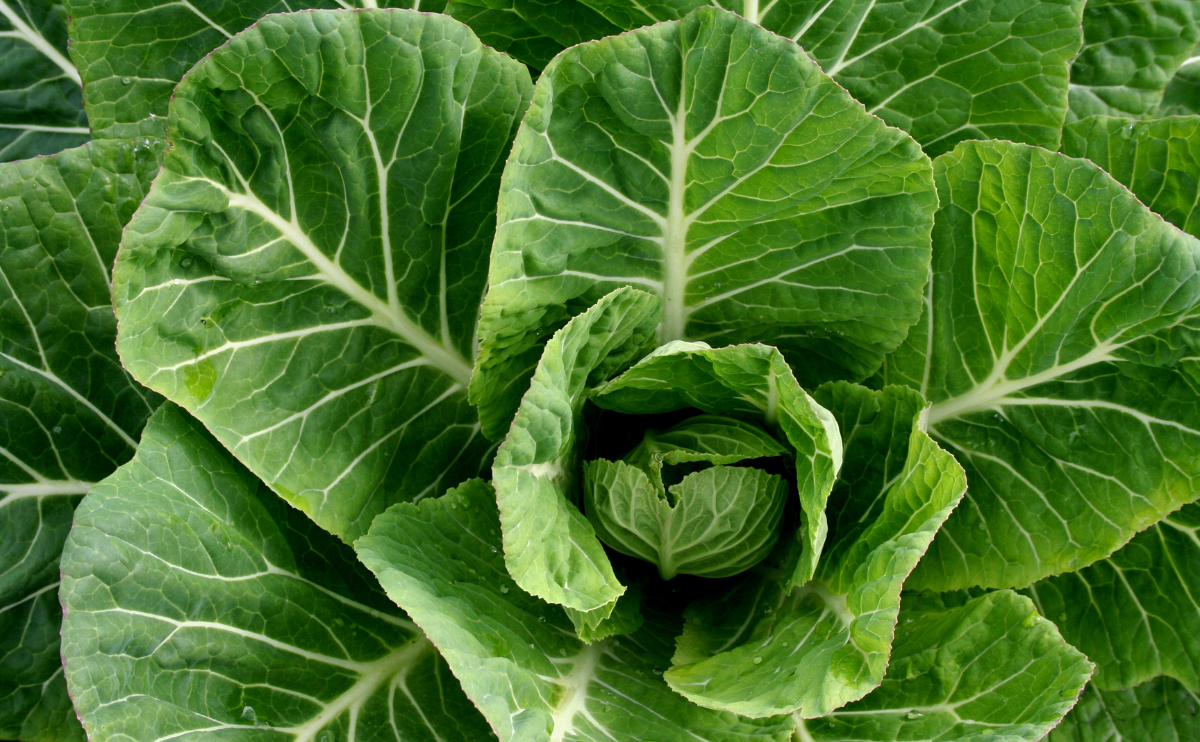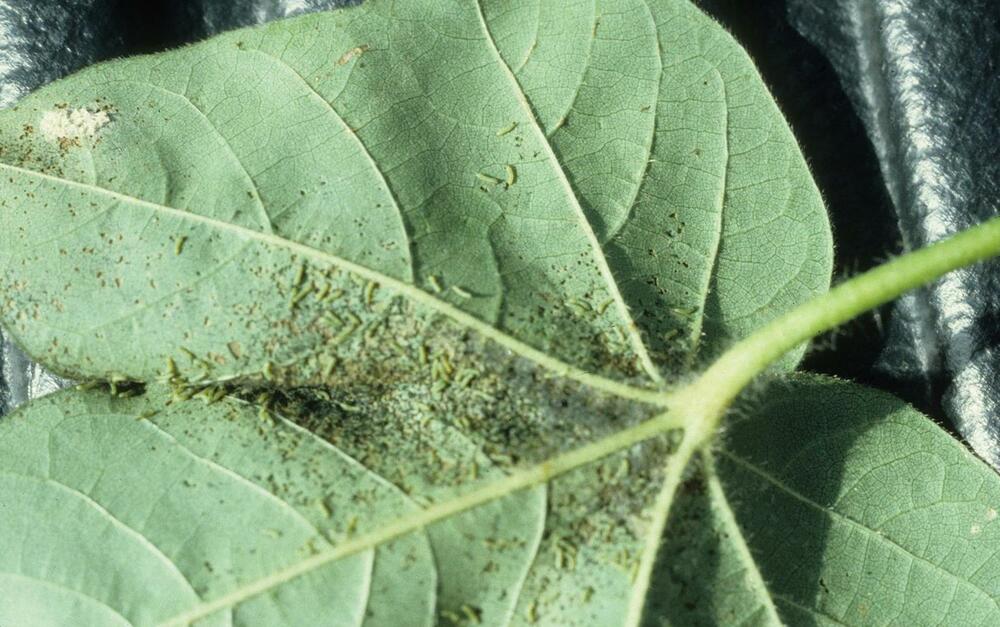Collards are a member of the Brassicaceae family. They are grown for their leaves, which are cooked much like kale. This cooking green is most often associated with Southern U.S. cooking. Collard greens are native to the eastern Mediterranean and Asia Minor, but the plants are easily grown in most U.S. climates.
Like kale, collards are a member of the cabbage family but do not form heads. Collards and kale are quite similar genetically, but breeding and cultivating over the years has produced plants with different textures and flavor. Collard leaves are smooth and almost waxy, with pronounced veining. They are quite large, with a bright to dark green color, and the stems are very fibrous and tough. Collards also tend to have a stronger and more bitter flavor than kale. True to the cruciferous family, collard flowers have four yellow petals in the form of a cross. The flowers are edible and have a sweet, cabbage-like flavor.
Cooking greens are some of the most nutritious vegetables you can eat, and collard greens, in particular, are packed with vitamins A, C, and K; soluble fiber; calcium; folate; manganese; and tryptophan—and less than 50 calories per serving. Eating your collards even helps to lower your bad cholesterol.
Collards can be planted in early spring for early summer harvest, or in late summer or early fall for a late fall harvest. Most varieties are ready to harvest in 55 to 75 days.

| otanical Name | Brassica oleracea L. subsp. acephala |
| Common Name | Collard greens, collards, tree cabbage |
| Plant Type | Biennial vegetable; usually grown as an annual |
| Size | 20 to 36 in. tall; 24- to 36-in. spread |
| Sun Exposure | Full sun to part shade |
| Soil Type | Moist, fertile, well-drained |
| Soil pH | Slightly acidic (6.5 to 6.8) |
| Native Area | Mediterranean and Asia Minor |
| Hardiness Zones | 6 to 11 (USDA); grown as an annual in all zones |

When to Plant?
This will be determined by your planting zone. There is a final frost date for each area. As a result, you can plan your gardening activities around this date. Check our Frost Dates Across North America: First & Last Frost Dates Chart. However, the date will not be the same for every plant.
How to Plant
Collards can be started from transplants or from seeds sown directly in the garden. Transplants usually are used for the spring crop. They add 4 to 5 weeks to the growing season because they can be grown indoors before the weather is warm enough to plant the seeds outside. Collard seeds sprout when the soil temperature reaches 45 °F
ove the transplants into the garden as soon as the soil can be worked in the spring; in most of Texas, this is in February or March. Set the plants in the soil at about the same depth as they were grown indoors. Space them 18 to 24 inches apart in the row. Water the plants after transplanting.

When planting seeds, make a shallow furrow about ½ inch deep down the center of the bed. Scatter the seeds lightly in the furrow. With a little practice, you can easily scatter the seeds by using your fingers to lightly tap the edge of the open seed packet. One teaspoon of seed will plant about 30 feet of row.
Cover the seeds with about ¼ inch of loose soil or compost; then sprinkle them with water. The plants should come up in 6 to 12 days. However, the colder the soil is, the more slowly the seeds will sprout.
For a fall crop, plant the seeds in the garden about 80 days before frost, which corresponds to August or September in most areas of Texas. Seed them heavily and then thin them.
How to Cultivate
After the plants have sprouted, let them grow until they get about 4 to 6 inches tall or become crowded in the row. Then thin the plants gradually until about 18 inches remain between them. Crowding causes the leaves to be smaller and less green.
The young plants can be either transplanted to another spot or used as greens Scatter 1 cup of garden fertilizer beside the plants for each 30 feet of row, about 1 tablespoon per plant. This is called side-dressing. Mix the fertilizer lightly with the soil, and water.
The plants may need to be sidedressed again in 4 to 6 weeks if they become pale and there is no sign that insects caused the change.
How to Harvest
All green parts of the plant are edible and may be harvested at any time during the growing season. Plants grown 6 inches apart can be cut at ground level when they reach 6 to 10 inches in height. As an alternative method of harvesting, you can pick the large leaves when the plants are 10 to 12 inches high.
This harvesting method allows the younger leaves to develop for later use. Some gardeners prefer the young, tender leaves and cut the inner rosette of young growth. This “loose head” may be blanched by tying the outer leaves together to keep out the sun. Frost improves the flavor in the fall
Hydroponics
Germination: Start by selecting high-quality collard seeds and soak them in water for 12-24 hours before planting. Fill a seedling tray with a growing medium such as rock wool or coconut coir, and plant the seeds about ¼ inch deepKeep the tray in a warm, humid location until the seeds germinate, which should take around 7-10 days.
pH range: Collard plants prefer a slightly acidic pH range of 6.0-6.5. You can test the pH level of your hydroponic solution using a pH meter or pH test kit and adjust it accordingly by adding pH up or down solutions.
EC: The electrical conductivity (EC) of your hydroponic solution should be maintained between 1.8-2.5 mS/cm for collard plants.
PPM: The recommended PPM (parts per million) range for collard plants is between 1260-1750 ppm. You can measure the PPM using a TDS (total dissolved solids) meter and adjust it by adding or reducing the nutrient solution.
Humidity: Collard plants thrive in a humid environment with a relative humidity level of around 50-70%. You can use a humidifier or mist the plants regularly to maintain the humidity level.
Light hours: Collard plants require around 12-14 hours of light per day to grow optimally. You can use LED grow lights or other suitable light sources to provide the necessary light.
Temperature air: The air temperature should be maintained between 60-75°F (15-24°C) during the day and 55-65°F (12-18°C) at night for collard plants.
Temperature water: Collard plants prefer a water temperature between 65-75°F (18-24°C) for optimal growth. You can use a water heater or cooler to maintain the water temperature within this range.
Overall, hydroponic Collard plants require consistent monitoring and adjustments to their environment to ensure healthy growth. With proper care and attention, you should be able to harvest a bountiful crop of fresh and nutritious collard greens.



